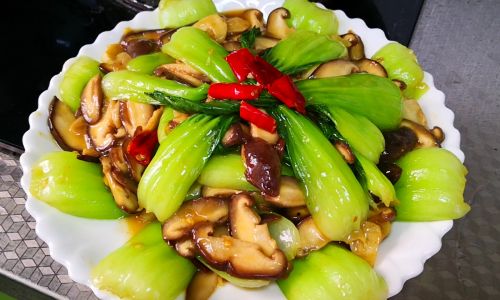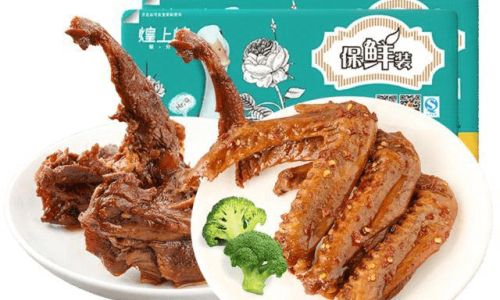Introduction
Fresh oil tofu, also known as fried tofu or deep-fried tofu, is a versatile and nutritious food staple enjoyed worldwide. Its soft yet slightly chewy texture and ability to absorb flavors make it an ideal ingredient in various dishes, from stir-fries and soups to salads and appetizers. However, maintaining the freshness and quality of oil tofu after purchase can be challenging, especially if you don’t consume it immediately. This article delves into the various preservation techniques for fresh oil tofu, offering practical advice to help you enjoy its deliciousness for longer.
Understanding Fresh Oil Tofu

Before discussing preservation methods, it’s crucial to understand what fresh oil tofu is and how it’s made. Oil tofu is derived from soybeans, which undergo a process involving soaking, grinding, boiling, and coagulating the soy milk into curds. These curds are then pressed to remove excess water, resulting in firm tofu blocks. For oil tofu, these blocks are further cut into smaller pieces and deep-fried until golden brown and slightly puffy. This frying process not only adds a delightful crispy exterior but also extends the shelf life compared to fresh, unfried tofu.
The Importance of Proper Preservation
Proper preservation of fresh oil tofu is vital for several reasons:
- Maintains Freshness: Keeps the tofu from spoiling, ensuring it retains its original taste and texture.
- Prevents Food Waste: Extends the usable life of the tofu, reducing the likelihood of throwing away perfectly edible food.
- Safety: Prevents the growth of harmful bacteria that can cause food poisoning.
- Convenience: Allows you to store tofu for later use, making meal planning and preparation more flexible.
Common Preservation Methods

Several methods can be employed to preserve fresh oil tofu, each with its own set of advantages and considerations. Here are some of the most effective techniques:
Refrigeration
Refrigeration is the most straightforward and commonly used method for preserving fresh oil tofu. By storing it in the refrigerator, you can significantly slow down bacterial growth and extend its shelf life.
- Preparation: Ensure the tofu is completely cooled after frying. Place it in an airtight container or wrap it tightly in plastic wrap to prevent air exposure.
- Storage Duration: Fresh oil tofu can be kept in the refrigerator for up to a week. However, its quality and texture may gradually decline over time.
- Best Practices: Label the container with the date of storage to keep track of freshness. Avoid stacking heavy items on top of the tofu, which could compress and ruin its texture.
Freezing

For longer-term preservation, freezing is an excellent option. Freezing halts bacterial growth almost entirely, allowing you to store tofu for months.
- Preparation: Allow the tofu to cool completely after frying. Separate the pieces to avoid them sticking together during freezing. You can wrap each piece individually in plastic wrap or place them in a single layer in a freezer-safe container.
- Storage Duration: Fresh oil tofu can be frozen for up to 3 months without significant quality loss.
- Thawing: When ready to use, thaw the tofu in the refrigerator overnight. Alternatively, you can thaw it under cold running water or in the microwave, but be cautious of overcooking if using the latter method.
- Texture Considerations: Freezing and thawing may alter the tofu’s texture slightly, making it slightly softer and more prone to breaking apart. This is generally acceptable for cooked dishes but may not be ideal for dishes requiring a firmer texture.
Vacuum Sealing
Vacuum sealing is a high-tech preservation method that removes oxygen from the packaging, creating an anaerobic environment that inhibits bacterial growth.
- Equipment: Requires a vacuum sealer and vacuum bags.
- Preparation: Ensure the tofu is cool before sealing. Place it in the vacuum bag, remove as much air as possible, and seal tightly.
- Storage Duration: Vacuum-sealed fresh oil tofu can be stored in the refrigerator for up to 2 weeks or in the freezer for up to 6 months.
- Advantages: Provides a longer shelf life compared to traditional wrapping methods and helps maintain the tofu’s original texture and flavor.
Pickling or Marinating

While not traditional preservation methods for oil tofu, pickling or marinating can add flavor while extending shelf life, especially if you plan to use the tofu in specific dishes.
- Pickling: Submerge the tofu in a vinegar-based brine solution. This method is less common for oil tofu due to its already fried exterior, but it can be used for unfried tofu.
- Marinating: Soak the tofu in a seasoned liquid such as soy sauce, mirin, or a combination of spices and herbs. This not only preserves the tofu but also flavors it, ready for use in dishes like sushi or stir-fries.
- Storage: Marinated tofu should be stored in an airtight container in the refrigerator and consumed within a few days.
Drying
Drying is an unconventional method for oil tofu but can be effective in certain climates or for specific culinary purposes.
- Preparation: Cut the tofu into thin slices and lay them out on a baking sheet lined with parchment paper. Place in a low-temperature oven (around 150°F or 65°C) with the door slightly ajar to allow moisture to escape. Dry until the tofu is firm and slightly tacky to the touch.
- Storage: Dried tofu can be stored in an airtight container at room temperature for several weeks. It’s best suited for soups and stews where it will rehydrate.
Conclusion

Preserving fresh oil tofu doesn’t have to be complicated. By choosing the right method based on your needs and available resources, you can ensure that your tofu stays fresh, delicious, and safe to eat for extended periods. Refrigeration and freezing are the most accessible and effective options for most households, while vacuum sealing offers a more advanced solution for those looking to maximize shelf life and maintain quality. Pickling, marinating, and drying provide unique flavors and textures but may be less suitable for general-purpose preservation.
Remember, no matter which method you choose, always handle food safely by washing your hands, using clean utensils, and storing food in appropriate containers. By following these guidelines, you can enjoy the versatility and deliciousness of fresh oil tofu anytime you want. Happy cooking!






0 comments